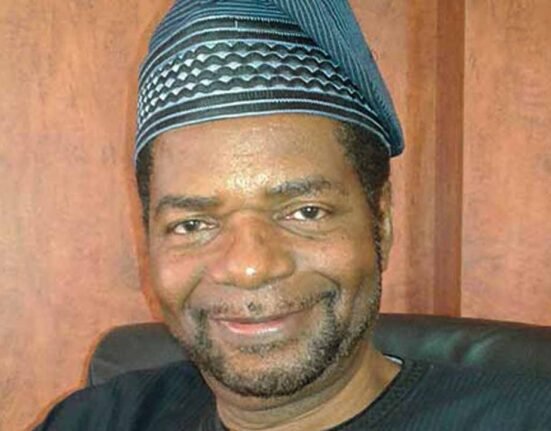Testifiers Friday at the Board of Land and Natural Resources meeting in Honolulu turned a vote on the U.S. Army’s Final Environmental Impact Statement for the proposed retention of state-owned lands at Pohakuloa Training Area into a referendum on lease renewal, the U.S. military in Hawaii and Hawaiian sovereignty.
That occurred despite numerous statements by BLNR Chairwoman Dawn Chang that the vote concerned only the document — the lease and the military’s presence weren’t on the agenda.
After hours of testimony, BLNR voted 5-1 with one abstention to reject the FEIS.
Chang, Maui member Doreen Napua Canto, Kauai member Karen Ono, Oahu member Aimee Kelii Barnes and at-large member Wesley “Kaiwi” Yoon all voted to not accept the document.
Hawaii Island member Riley Smith voted to accept the FEIS, while at-large member Vernon Char abstained from the vote.
The vote came on a critical deadline. Had it not occurred Friday, the FEIS — a mandatory step in the PTA lease renewal process — would’ve been approved by default.
The Army’s 65-year lease for 23,000 acres of state-owned land at PTA for $1 per year will expire in 2029.
Department of Land and Natural Resources staff presented concerns about the FEIS. Those included an incomplete inventory of archaeological sites, a lack of data and analysis regarding endangered biological resources, and inadequate consultation for the cultural impact assessment.
“This is probably one of the most important and most difficult decisions that the land board has had to make,” Chang said. “After reviewing three volumes of the FEIS and considering hours of oral testimony written comments, the board members’ decision not to accept the Army’s FEIS was based upon the inadequacy of the FEIS.
“This decision was not about the merits of whether the Army should not conduct training in Hawaii, but whether the FEIS provided the public and the land board adequate information to make an informed decision about the environmental impacts of the proposed action.”
The State Historic Preservation Division acknowledged, as did voluminous testimony from the community, the presence of historic and cultural properties, including ‘iwi kupuna, or ancestral remains, within the live-fire impact area — federal land that can only be accessed via state-owned property. The FEIS didn’t include potential repercussions to these resources as a result of the retention of the state-owned lands.
The Army has acknowledged that ceasing use of state land would end live-fire activity at PTA. SHPD also requested archaeological surveys of PTA and concluded that the Army hadn’t performed its due diligence, leaving the potential impact to cultural and archaeological sites unknown.
Staff presented additional concerns regarding Army consultation about the cultural impact assessment. Staff noted that no apparent effort was made to consult with the Aha Moku council, which had been recommended numerous times by Chang. SHPD similarly found the cultural impact assessment to be insufficient and had urged the Army to individually interview a larger number of people with cultural connections to PTA.
Col. Rachel Sullivan, commander of U.S. Army Garrison Hawaii, urged the board to accept the document, calling the Big Island training facility “critical for national defense.”
“The Army’s presence in Hawaii is vital to our national security strategy … to deter conflict and maintain a safe, stable and secure Indo-Pacific,” Sullivan said. “The state-owned lands … include maneuver area, training facilities, infrastructure and U.S. government-owned utilities that are essential for military, state and local agency training.
“Some of these assets are not available anywhere else in Hawaii or the Pacific region.”
Chang said BLNR received more than 1,300 pieces of written testimony. Friday’s in-person testimony was overwhelmingly against acceptance of the FEIS.
Davianna McGregor, a historian and University of Hawaii professor emerita of ethnic studies, said the document had several points of “severe deficiency.”
“The Army fails to provide a complete inventory of archaeological sites within the state-leased lands, and the DLNR … pointed that out,” McGregor said. “… The military’s not demonstrated that they are able or willing to adequately clean up … the area after … contamination.”
The lack of a “proper archaeological survey” and failure to account for ‘iwi kupuna was also pointed out by James Maioho, caretaker for Mauna ‘Ala, the royal mausoleum in Nuuanu, Oahu.
“Those ‘iwi is who we are as a people. It’s who makes me and who makes you people that are kanaka. Protecting them in all of our moku should be of the utmost importance to the people we elect and appoint,” Maioho said.
Julie Au, representing ‘Aina Momona, an organization founded by Native Hawaiian activist Walter Ritte, said the FEIS “fails to satisfy legal requirements because it’s based entirely on outdated data.”
“The Army has had ample time to renew this lease,” Au said. “The 2029 deadline wasn’t a surprise. It didn’t sneak up on them. … Their failure to conduct timely surveys is a result of neglect, mismanagement and arrogance. Their decision to withhold the discovery of burial objects in this EIS is a testament to that neglect. Their continued determination to convince us that there is little to no environmental impact on bombing the land is a testament to their arrogance.”
Two Republican state senators from leeward Oahu also testified against accepting the FEIS.
Sen. Samantha DeCorte said the DLNR’s staff pointed out that the document “fails to address critical concerns about our environmental safety and our sovereignty.”
“In particular, they pointed out the EIS failed to disclose a significant incident regarding the removal of cultural artifacts at Pohakuloa in 2022,” DeCorte said. “This is a fact. … Your own staff is saying, and I quote, ‘One of the most significant finds in the last 100 years.’ Yet, this information was not in the final EIS study.”
Sen. Kurt Fevella said the EIS “doesn’t even make sense.”
“It doesn’t get to the root of the evil that’s been done on our sacred land,” Fevella said.
A few testified in favor of accepting the document as is, including Mary Begier, a Hilo real estate agent and U.S. Navy veteran.
“My exposure to the people involved with the EIS — the people that work at Pohakuloa, not just the Army, but all the civilians that are employed there — the integrity of those people are being called into question. And I don’t see it,” Begier said. “… And I’m concerned that staff still has questions. But we will always have questions when we’re talking about something as complex as running a military facility.”
Gov. Josh Green said he respects “the board’s decision and the community voices that guide it.”
“While the rejection of the final EIS presents challenges, it is not the end of the conversation. We remain committed to finding new paths that protect Hawaii’s natural and cultural resources while supporting national security,” Green said.
Hawaii’s congressional delegation — U.S. Sens. Mazie Hirono and Brian Schatz and U.S. Reps. Ed Case and Jill Tokuda, all Democrats — issued a joint statement about the vote.
“While we acknowledge the (BLNR’s) decision … we believe there can be a path forward that accounts for the critical importance of Hawaii’s role in our country’s national security strategy and fundamentally respects and responds to the needs of the people of Hawaii,” they said.
Email John Burnett at jburnett@hawaiitribune-herald.com.







